Digital (business) transformation versus slapping a nice User Interface on top of that spaghetti you call an operating model?
Gartner defines the term “digital transformation” as follows: “Digital transformation can refer to anything from IT modernization (for example, cloud computing), to digital optimization, to the invention of new digital business models. The term is widely used in public-sector organizations to refer to modest initiatives such as putting services online or legacy modernization. Thus, the term is more like “digitization” than “digital business transformation.” https://www.gartner.com/en/information-technology/glossary/digital-transformation
Gartner then defines another term “digital business transformation” as “the process of exploiting digital technologies and supporting capabilities to create a robust new digital business model.” https://www.gartner.com/en/information-technology/glossary/digital-business-transformation
In this text I am referring to both as “digital transformation”.
Exciting news! Your organization has appointed you a new boss, the newly minted Head of Digital Excellency who is tasked with driving the digital transformation in your organization. You are his/her second in command.
After the first couple of weeks the newly appointed Head of Digital Excellency has ideas. Let’s build a fancy new portal in front of the existing business applications and call the famous FancyUIsCorp Ltd to craft a new visual layout for it!
Service Unicorn’s Magical Digital Transformation
What happens next is something we have seen time and time again. The FancyUIsCorp’s team, who are excellent in what they do, came and
- they designed a new portal look and feel with easy one button click-to-order and click-to-automate scenarios
- they sold it to the executives who loved it (who wouldn’t)
- you are expected to somehow tie the loose ends because the system where the UI is running does not have context information available and therefore the implementation is not possible. Running automation, or delivering orders after one click, requires loads of context such as who is clicking, where to deliver, running automation based on what information, etc.
Essentially this digital transformation initiative was a futile “slap a new user interface on top of existing spaghetti” exercise, which you could maybe somehow manage to save with good integration tools if you have the data somewhere, have access to it, and you manage to overcome the privacy / infosec / risk / compliance / governance issues. Having our tongue firmly on the cheek, we call it “Service Unicorn’s Magical Way for Digital Transformation”.
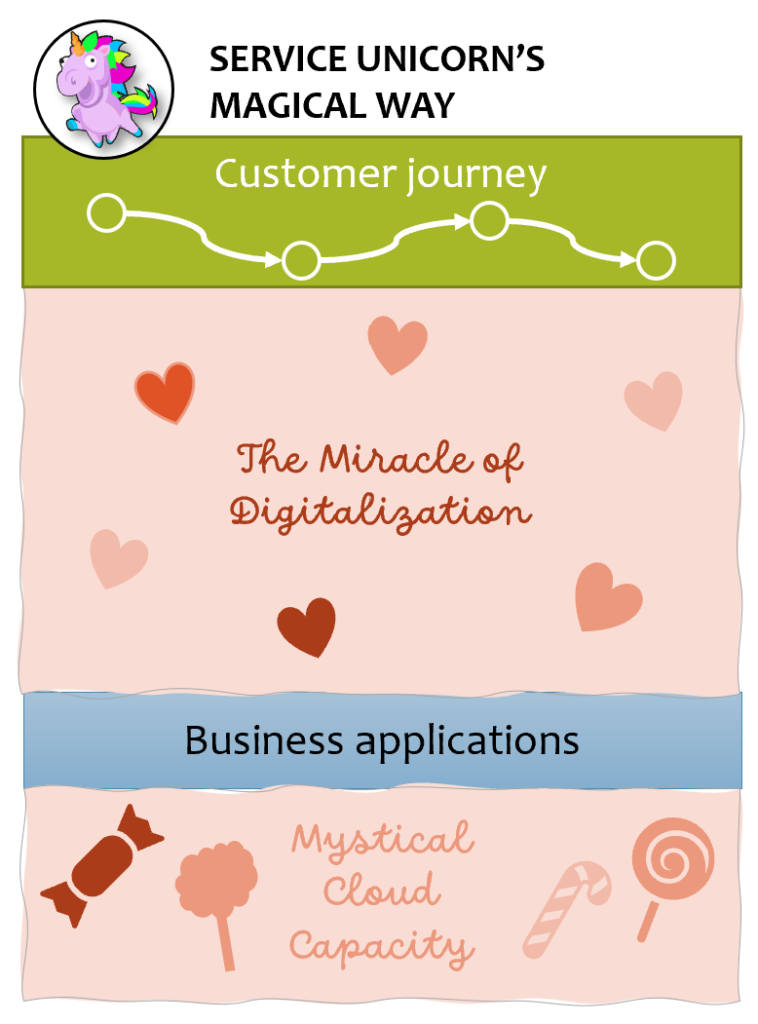
Not having proper context available is also the primary reason why even the user interface improvement projects follow the pattern described in this popular picture from Eric Burke @ stuffthathappens.com. If the system does not have enough information -> the user must provide the information -> the user interface will start filling up.
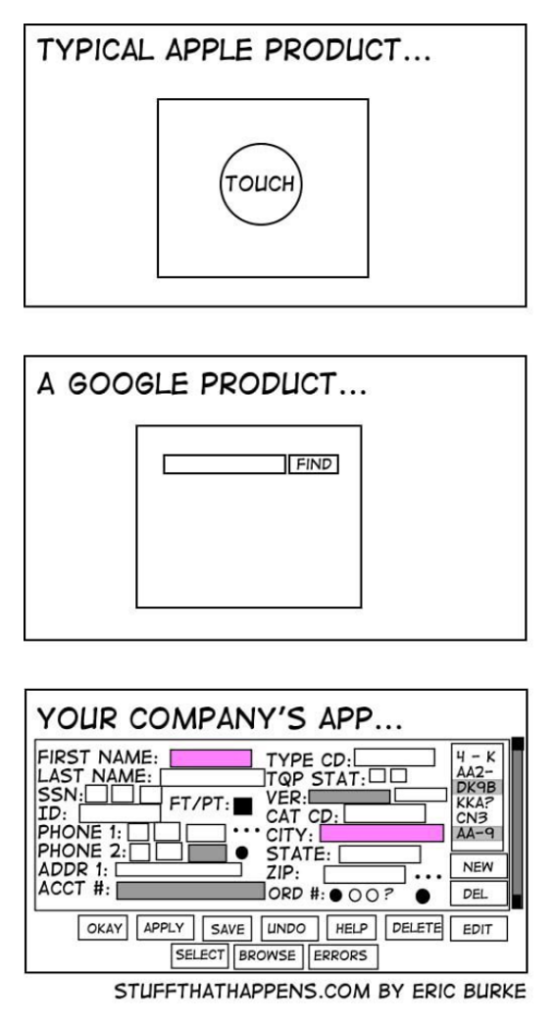
Digital transformation
Digital Transformation (Gartner would like to call it Digital Business Transformation) requires a holistic approach where you
- define (or have ready) the target business model derived from the vision and mission of the organization
- document the current business model – or the lack of it
- define the target operating model which supports the target business model
- document the current operating model – or the lack of it
- plan the strategy (or steps or EA increments) to transform the current operating model into the target operating model
- execute that strategy and evaluate the need to change the strategy along the way.
You can, of course, target only one part of the organization, for example a service line or a service, and not the whole organization immediately.
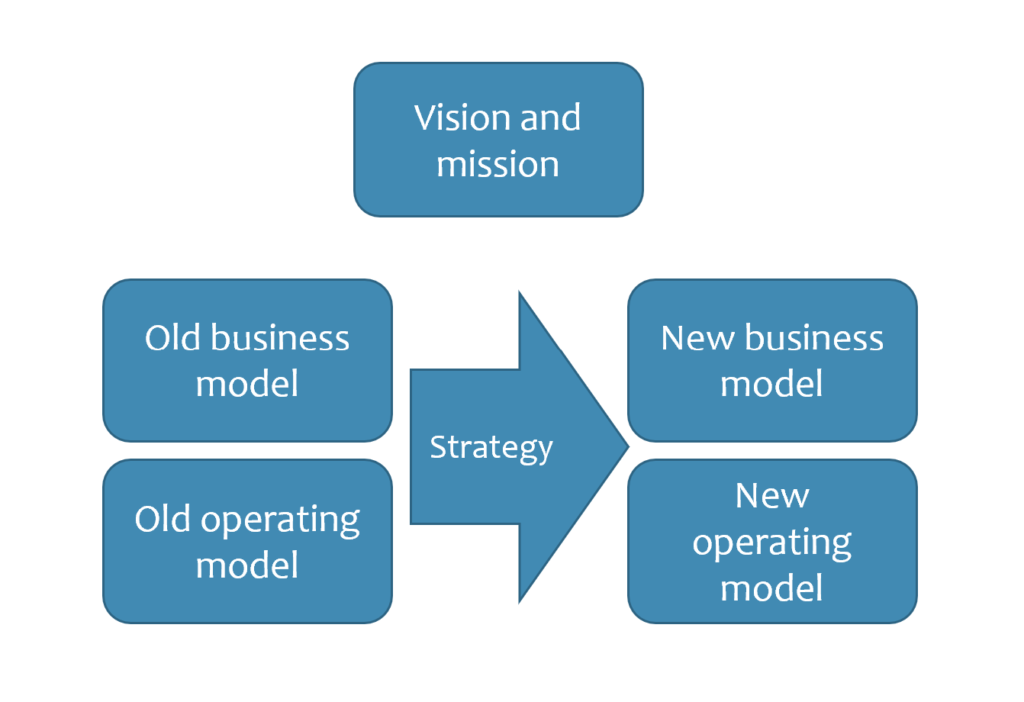
Gartner’s definition for operating model is here (https://www.gartner.com/en/information-technology/glossary/operating-model), but for me the essential part is this: “an operating model brings the business model to life; it executes the business model.”
In other words (my words), the operating model describes the components required to deliver the services/products which create the intended value for customers and brings income to the organization while making sure we stay compliant with whatever legislation, regulation, agreements, policies etc. we must follow. Note that the components themselves describe the who, what, where, when, and how.
Now, if you have been reading my previous blog posts, you are somewhat familiar with the picture below.
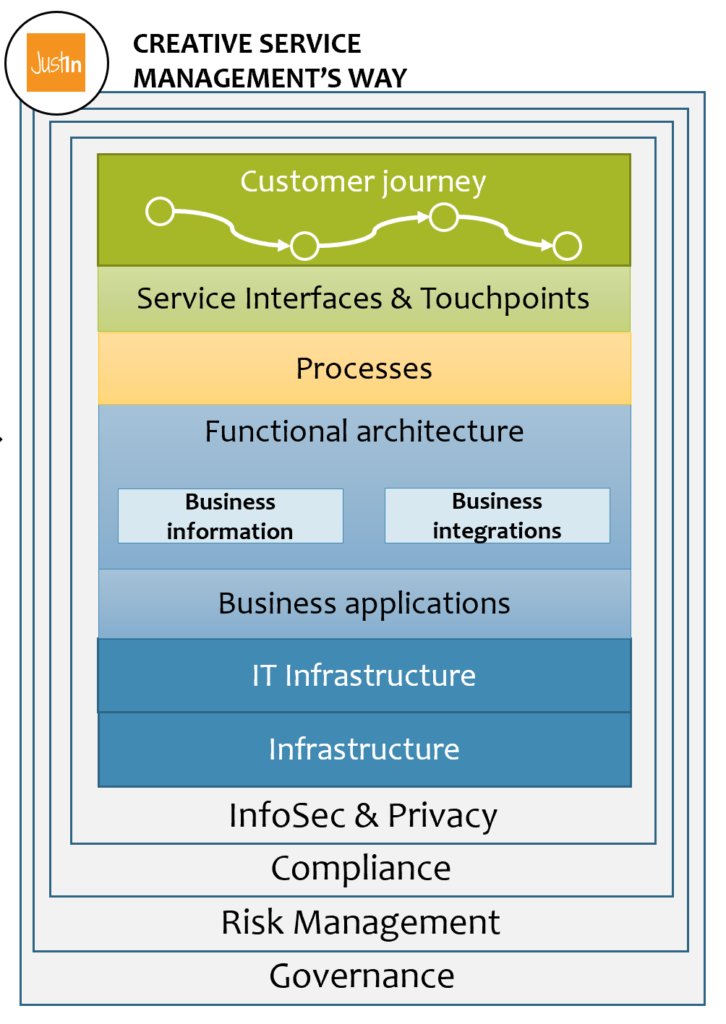
To define the operating model for the enterprise/business unit/service line/service, the <unit> will need to understand how the value is created today (current operating model) and how it will be created in the future (target operating model).
- Customer journeys and associated Service Interfaces (Phone, web pages, APIs, SMS, etc) – How do our customers and other users participate in the business activities?
- Underlying Services and contracts – What are those service touchpoints made of, who or what entities are subscribers, what other services are used to provide services?
- Processes and the organization around them – What entities are processing the information and how?
- Functional architecture, information architecture, and integration architecture – What functional components are we using from which business applications and what information are we processing and how is it moving between the functional components and systems?
- Business applications – What information systems are we using in our processes?
- IT Infrastructure – What are the components of the information systems we are using?
- Infrastructure (physical world) – Where are all the components located in the physical world?
Since we need to stay compliant to possibly multiple jurisdictions and regulations and with commitments the organization has made, and not to get run over by what is happening in the business environment, we need to make sure we also have the “boring” things in place.
- Governance
- Risk Management
- Compliance
- Information Security and Privacy Management.
Your job likely is to tell the new Head of Digital Excellency what should happen before that one-click-to-deliver user interface can be implemented. Once you lay out the current operating model, you will likely realize that you need
- new tools
- new capabilities to utilize the tools
- additional data and place to store the data in a compliant way
- privacy impact assessment because you store new personally identifiable information or in a new place or with new processing entities (vendors, sub vendors, partners, etc.)
- security impact assessment
- risk assessment
- new privacy notice
- new policies
- …and maybe more
Everyone is doing Digital (business) transformation these days, it just means different things to different people. Which one would you choose if your career and money were on the line?
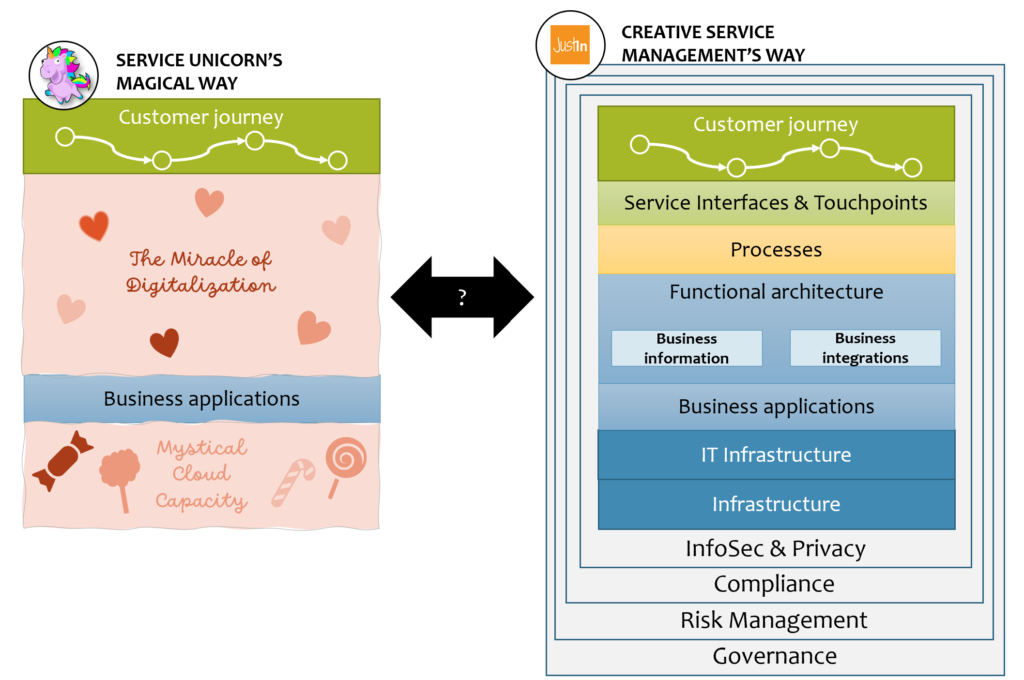
If you are more inclined to select the one on the right-hand side – contact us if your organization needs help in one or more of the following
- defining the Operating Model for Service Management (or Service Management System)
- defining Governance, Risk, or Compliance management processes
- incorporating Information Security and Privacy Management into Services
- creating Business Impact Analysis
- creating Business Continuity and Disaster Recovery Plans
- defining Configuration Management, Service Asset and Configuration Management, or CMDB
- functional architecture, integration architecture, information architecture.
Need to know more?
Creative Service Management -handbook serves as an aid and information source for people working with service development, leadership and management. Order your copy from JustinShop.
If you need training on CMDB, Service Catalog topics or want to know the secrets of IT4IT, click here and familiarize yourself with Justin’s training offering
Checkout Creative Service Management videos on our YouTube-channel
- Intelligent Data Processing, introduces the secrets of functional architecture. The functional architecture enables the intelligent design and description of internal management systems, their functionalities, and the information processed in them.
- CMDB A-B-C: what a CMDB is and what benefits its use will bring to service organizations. In addition, the video will list the 4 most important things to consider when implementing CMDB and configuration management. English subtitles available!
If you’re not already following us on LinkedIn, you can easily fix it here: https://www.linkedin.com/company/justin-group-oy/
Julkaistu 19.04.2022
